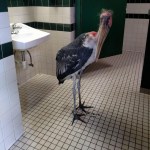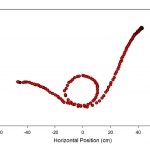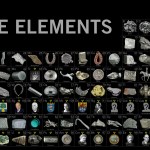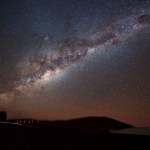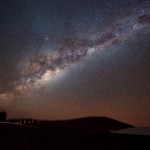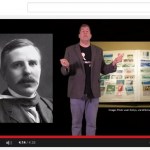Video
Have you ever heard of 'Goodpasture Syndrome'? I'll admit I haven't. Check out the award-winning video below for the 2017 American Physiological Society's video contest to learn about this syndrome. The video was created by Melissa Traver, Samantha Lyons, and Andrianna Walsh from Centenary College of Louisiana. Congratulations!!
A collection of tweets showing things #Matthew related
Las inundaciones a causa de #Matthew...Video of flooding from 11th Ave S, Jacksonville Beach. Vía: @wjxt4 pic.twitter.com/J5AAzMPXiM
— Webcams de México (@webcamsdemexico) October 7, 2016
Video of huge tree getting ripped out of the ground from #HurricaneMatthew in #Jacksonville FL.#Matthew #Hurricane pic.twitter.com/r6Wwd2aRS9
— DeeconX (@DeeconX) October 7, 2016
#Hurricane #Matthew death toll passes 800 in #Haiti, cholera takes lives https://t.co/QRx8HRPyx4
— Skep tickle (@Ellesun) October 8, 2016
Current look along A1A in St.…
Summer continues, and the public lecture series on physics continues a pace at the Aspen Center for Physics with Dr. Catherine Heymans of the University of Edinburgh talking today on the "Dark Side of the Universe".
The talk is part of one of the three workshops currently taking place:
"Testing the Laws of Gravity with Cosmological Surveys"
"Emergence, Evolution and Effects of Black Holes in the Universe: The Next 50 Years of Black Hole Physics"
"Entanglement Matters"
the public talks are recorded and will, eventually, be available online courtesy of Aspen Grassroots TV, in the meanwhile,…
Don't forget to vote for your favorite Phantastic Physiology Voyage video from trainees sponsored by the American Physiological Society. This year's theme is “Function Follows Form.”
Here is just a sample of the phantastic videos (from YouTube) in the contest:
To see the rest of the videos and vote for your favorite, click here!
I am excited to report that it's that time of year again when the American Physiological Society hosts their annual video contest! This year's Phantastic Physiology Voyage theme is “Function Follows Form.”
Here is just a sample of the fun videos in the contest:
Please vote for your favorite physiology video here!
"So numerous are the objects which meet our view in the heavens, that we cannot imagine a point of space where some light would not strike the eye;—innumerable stars, thousands of double and multiple systems, clusters in one blaze with their tens of thousands of stars, and the nebulae amazing us by the strangeness of their forms and the incomprehensibility of their nature, till at last, from the limit of our senses, even these thin and airy phantoms vanish in the distance." -Mary Fairfax Greig Somerville
The distant nebulae might appear to illuminate the night sky, but this neutral gas is…
I came across this highly entertaining video of the "Top 10 Extreme Forms of Life" on YouTube:
One of the highlights of teaching introductory mechanics is always the "karate board" lab, which I start off by punching through a wooden board. That gets the class's attention, and then we have them hang weights on boards and measure the deflection in response to a known force. This confirms that the board behaves like a spring, and you can analyze the breaking in terms of energy, estimating the energy stored in the board, and the speed a fist must have to punch through the board. As a sort of empirical test, we can drop a half-kilogram mass from the appropriate height to match the…
One of the points I make repeatedly in teaching introductory mechanics (as I'm doing this term) is that absolutely every problem students encounter can, in principle, be solved using just Newton's Laws or, in the terminology used by Matter and Interactions, the Momentum Principle. You don't strictly need any of the other stuff we talk about, like energy or angular momentum.
Of course, just because you can solve any problem using the Momentum Principle doesn't mean that you want to solve those problems that way. As an example of a problem that's really annoying to solve with just the Momentum…
I've mentioned in a few places that SteelyKid frequently comes home from school/ camp/ day care singing garbled versions of current pop hits. So for the first time since about 1990, I added a Top 40 station to my car radio presets, so I would know what she was actually trying to sing. This leads to a bunch of seat-dancing and sing-along in the back seat as I drive her to taekwondo and so on, so I give you three of the songs that she's grooving two these days:
First up, we have:
My first reaction to hearing that was "Hey, it's great that Morris Day is getting work..." But, you know, I enjoyed…
“I think if I had to choose, I would rather have gravity instead of zero gravity. It’s fun for a while, but I’d rather live on Earth.” -Kevin A. Ford
By now, you've probably had a lot of opportunities to think about what holds our Universe together: the incredible force of gravitation. Although it's the weakest known force in the Universe, there seems to be no limit to how much mass you can collect in one place. And so on the largest scales -- like solar systems, stars and galaxies -- it seems to be the only force that matters.
Image credit: © 1998–2015 Lynette R. Cook.
Yet the matter that…
“A physicist is just an atom’s way of looking at itself.” -Niels Bohr
There's a wonderful story that the Universe tells us about itself: the story of where everything in it came from, and how it came to be this way. From the perspective of a human being, there's possibly no component of that as important to our existence as the humblest of all building blocks: the atoms.
Image credit: (c) Theodore W. Gray, from http://periodictable.com/.
Yet when the Universe first cooled from the Big Bang, over 99.999999% of what existed was nothing more than hydrogen and helium. So where did the atoms…
“The larger the island of knowledge, the longer the shoreline of wonder.” -Ralph W. Sockman
After millennia looking up at the Milky Way overhead, it's only recently that we discovered our galaxy had a spiral-like structure, and that the other spirals and ellipticals in the night sky are galaxies much like our own. But how did they come to be? Why do they appear the way they are? And what will come of them in the future?
Find out the answers to all these questions and more on the third episode of Genesis, where we focus on the galaxy and where it comes from!
(And if you missed either of…
One of my Christmas gifts this year was a Seek Thermal camera, so I can continue my transformation into Rhett Allain. What's this for? Why, physics, of course. Such as this video of the operation of the Christmas pyramid my parents picked up in Germany, and had set up at the start of Christmas dinner:
Sadly, the Seek Thermal app doesn't seem to record audio with the video, so you miss out on SteelyKid's running commentary about the whole thing... But you can fairly clearly see the plumes of hot air rising up from the candle to push the vanes of the fan. There's probably a way to estimate the…
“When you look at the stars and the galaxy, you feel that you are not just from any particular piece of land, but from the solar system.” -Kalpana Chawla
Two weeks ago, we released the first video in our web series: Genesis, the story of where all this comes from.
The video was on Organic Molecules, and while it hasn't exactly gone viral (yet), the like/dislike ratio is pretty hard to beat.
Well, it's time for Episode 2, on the topic of the Solar System. Head on over to Medium to watch the whole thing, along with an official transcript as well!
Ever wonder what lies beneath the polar ice? Turns out several researchers did as well. This past July a team of scientists led an expedition designed to image life under sea ice. The video below was captured with the Nereid Under Ice (NUI) vehicle and shows brown algae living on the bottom of sea ice as well as larvaceans, which are filter-feeding tunicates. The advantage of the new vehicle is that it can travel very far (the spools of cable are ~40 km long) and allows researchers to create maps and collect samples. Researchers are hoping to explore greater distances in future dives that…
“Our feeblest contemplations of the Cosmos stir us — there is a tingling in the spine, a catch in the voice, a faint sensation, as if a distant memory, of falling from a height. We know we are approaching the greatest of mysteries.” -Carl Sagan
34 years ago, Carl Sagan became the first person to present -- in a format accessible to the entire world -- a synthesized story of all the most important scientific points and facts that we had learned about the cosmic story common to us all.
Image credit: NASA / GSFC, via http://cosmictimes.gsfc.nasa.gov/universemashup/archive/pages/big_bang….
No…
New research from Vanderbilt University shows that hummingbirds and insects have a lot in common...when it comes to flying at least. The researchers placed nontoxic paint on the wing of a ruby-throated hummingbird at 9 different spots then videotaped the animal flying at 1,000 frames per second with 4 cameras simultaneously. Using 3D simulations of the hummingbird flight, they discovered that the tiny birds stir up air around their wings in a way similar to insects like mosquitoes and dragonflies.
Larger birds obtain much of their energy for flight from the downstroke of the wing as it pushes…
“You may have heard the world is made up of atoms and molecules, but it’s really made up of stories. When you sit with an individual that’s been here, you can give quantitative data a qualitative overlay.” -William Turner
This blog has always been about the cosmic story common to us all: the story of where all this comes from. It's no coincidence I named it Starts With A Bang; perhaps the most remarkable thing in the entire Universe is that it can be scientifically understood!
Image credit: B. Fugate (FASORtronics) / ESO, via http://www.eso.org/public/usa/images/epod-cc-rf18284/.
And…
Almost everybody, regardless of what side they favor in the culture wars, knows that Charles Darwin was the first scientist to come up with the theory of evolution. At least, they think they do. In fact, lots of people had the general idea long before Darwin, including his own grandfather. We remember Darwin not because he was first, but because he made the strongest case, thanks in large part to that most basic of hobbies, stamp collecting.
While Eureka: Discovering Your Inner Scientist has been sighted in the wild, the official release date isn't until next week. So, if you're still waiting…
